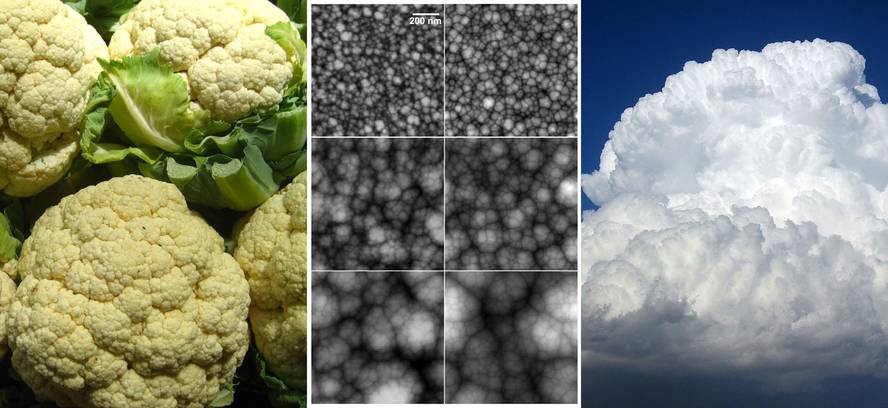All that grows in the form of cauliflower, described by a single equation

Clusters, cauliflower and other systems of nature grow according to the same pattern: following a fractal in the form of a cauliflower. Now, some mathematicians at Carlos III University of Madrid have managed to describe the evolution of this growth through an equation. Thanks to this work, mathematicians have developed a very powerful tool: they can mathematically describe through a single equation many natural phenomena very different to reality.
The key is in the fractals. A fractal is a singular geometric aspect that, seen at different scales, resembles itself. Cauliflower and wheat are good examples. A small part of the cauliflower resembles the whole cauliflower. Same the case of wheat: part of the leaf gives a miniature of the plant. Therefore, to study the evolution of a structure in the form of a cauliflower, it is necessary to study its fractal equation.
However, the researchers at Carlos III University did not leave the fractals, but were studying the development of a hydrogenated carbon film and saw the nanoscopic pattern of the fractal of the cauliflower. Although it seems like a structure developed randomly, development is not only random, but the researchers identified four basic elements in this type of geometries: time, competitiveness between local structures, chance and similarity. The mathematical parameters of these four characteristics have led to a model of mathematical evolution of the fractal of the cauliflower, which has served to apply it to all the natural processes of this appearance, even if they are of very different size or nature. The mere geometric description of these systems does not serve to predict evolution. The mathematical combination of the four features allows predicting the growth of a cloud, an explosion, or a cauliflower.






